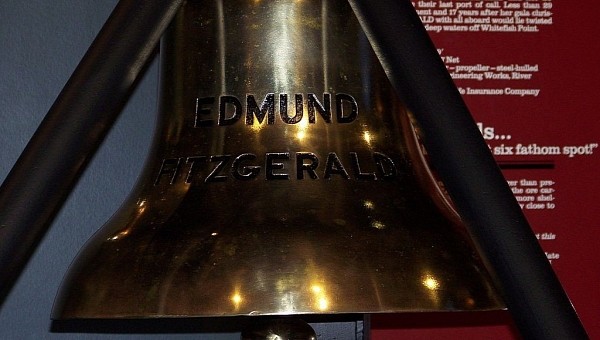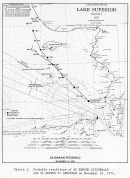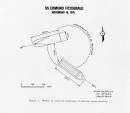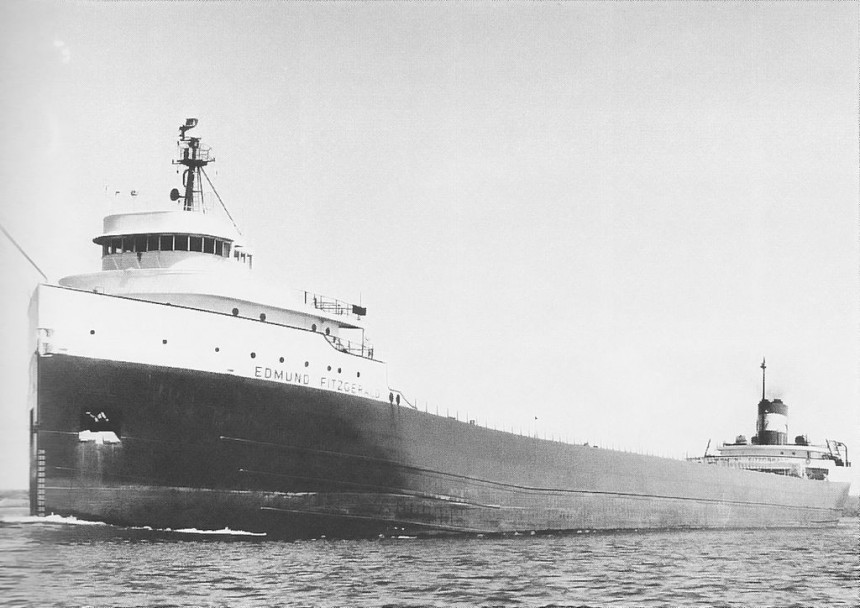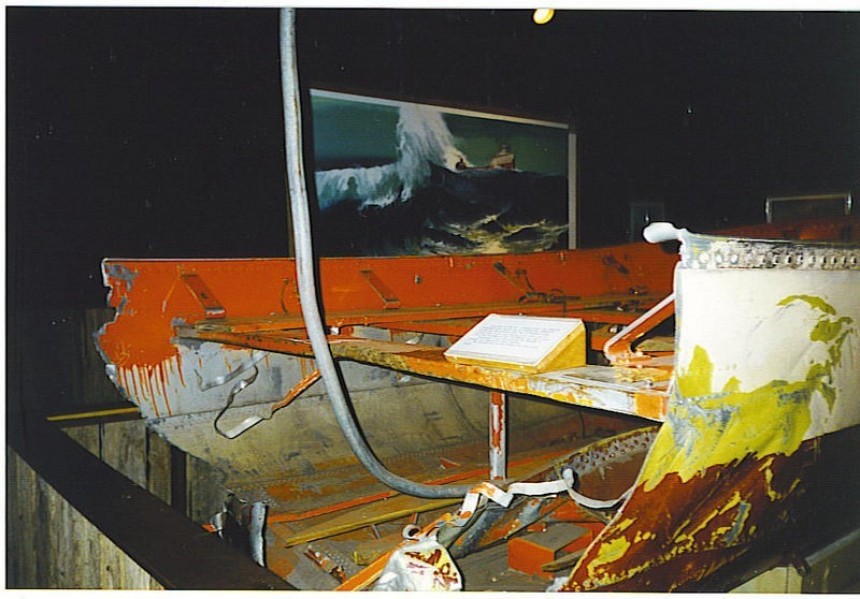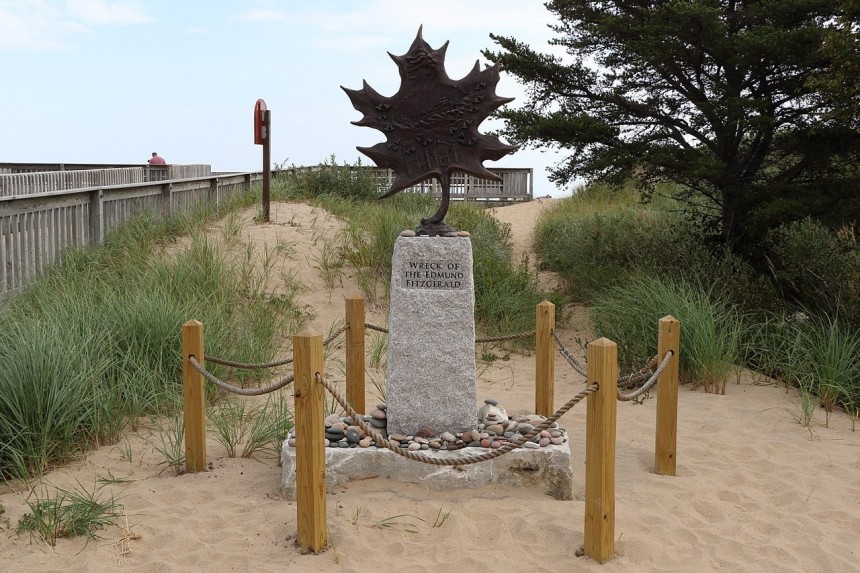While her location was pinpointed in 530-foot (160-meter) deep water in the frigid waters of Lake Superior, the exact cause of the sinking of the SS Edmund Fitzgerald remains unknown.
Northwestern Mutual Life Insurance Company of Milwaukee, Wisconsin, jumped into the iron and minerals industry by commissioning the building of the massive ship in 1957. She was built one foot shy of the maximum length allowed to pass through the soon-to-be-completed Saint Lawrence Seaway at the cost of $7 million ($74 million in 2022).
It was officially christened the Edmund Fitzgerald after the president of the Northwestern Mutual and launched on June 7, 1958.
The freighter measuring 729 feet (222-meter) long, 75 feet (22.9-meter), and 25-foot (7.6-meter) draft, would become the longest ship to ply the waters of the Great Lakes from the northern reaches of Lake Superior to the easternmost shores of Lake Erie. She was known as the 'Queen of the Lakes' until a year later when the 730-foot (222.5-meter) SS Murray Bay was launched.
Its 26,000 long ton (ca 26,5-million kg) capacity was divided into three central cargo bays loaded through 21water-tight cargo hatches. From its launch in 1958 until a refit during a winter 1971-72 layup, it was powered by coal-fired boilers before being converted to oil.
Its interior was said to be luxurious for a merchant vessel designed to carry ore with deep-pile carpeting, drapes over the portholes, tiled bathrooms, and leather chairs in the guest lounge. Crew quarters were air-conditioned, and a large galley was equipped to provide meals for two dining rooms. In addition, the pilothouse was equipped with state-of-the-art navigation equipment and a map room.
While it transported taconite iron ore from the mines near Duluth, Minnesota, to iron works facilities in Detroit, Toledo, and beyond, setting seasonal haul records six times over a 17-year period, its fate may have been sealed way back at its launch ceremony in 1958.
Sailors and merchant mariners are superstitious, having a fear of the unknown and using it to explain unforeseen misfortunes. The ceremony was bewitched by such misfortunes. Namely, the tradition of christening a new vessel by breaking a champagne bottle over its bow did not go as planned, as it took the wife of Edmund Fitzgerald three attempts to break the bottle. Secondly, the shipyard crew had difficulty releasing the keel blocks, causing a delay in the ceremonial launch. Upon finally being launched sideways, it lurched off the dock into the water, creating a wave so big that it doused the spectators, crashing into the pier before righting itself. In fact, it was reported that one witness swore the ship was “trying to climb right out of the water.”
After completing nine days of sea trials, the Edmund Fitzgerald went to work. Over its 17-year career, it was tagged with a variety of nicknames such as; "Fitz," "Pride of America," "Mighty Fitz," "Toledo Express," Big Fitz," and the "Titanic of the Great Lakes."
It would log an estimated 748 round trips on the Great Lakes covering over 1 million miles (1,6-million km), roughly equivalent to 40 trips around the world.
It would leave on its final voyage on November 9, 1975, at 2:15 from Superior, Wisconsin, fully laden with over 26 tons of taconite ore pellets bound for Detroit. Under the command of Captain Earnest M. McSorely, she sailed south amid reports of an approaching storm that was projected to pass south of Lake Superior by the morning of November 10th.
The National Weather Service would later update the forecast in the early evening hours of November 9 and warned of gale-force winds. McSorley consulted with the captain of a trailing ship, the Arthur M Andersen, and together they decided to head north for security near the Ontario shore. There they encountered an early-winter storm in the early hours of November 10, reporting winds of 52 knots (97km/h; 60mph) and waves 10 feet (3-meter) high.
Throughout the afternoon of November 10, the captain of the Arthur M. Andersen maintained radio contact with the Edmund Fitzgerald. High winds and huge waves continued to pound both ships in gale-force form. At 4:52, the Arthur M Andersen reported winds as high as 58 knots (107km/h; 67mph) and waves in excess of 25 feet (7.6-meter) by 6:00p.m.
The last transmission from the Edmund Fitzgerald came a short time later at 7:10 p.m. When Captian McSorley reported, “We are holding our own.” Just ten minutes later, both radio communication and radar detection were lost.
All told, the sinking of the Edmund Fitzgerald claimed the lives of all 29 crewmen, none of whom were ever found. Underwater surveys performed by the United States Coast Guard would find it just 15 miles (24 km) west of ominously named Deadman's Cove, Ontario, lying on the Lake Superior bottom broken in two.
The Edmund Fitzgerald joined some 240 vessels in the area that also succumbed to the violent and unpredictable nature of Lake Superior waters. It remains a mystery what the final blow to the mighty ship had been, but many have speculated a rogue wave may have been the culprit.
The wreck is probably the most well-known vessel to sink in the Great Lakes with the help of Gordon Lightfoot's 1976 hit song “The Wreck of the Edmund Fitzgerald.”
As with many accidents of this nature, there were many changes to shipping regulations on the Great Lakes that included mandatory survival suits, depth finders, positioning systems, increased freeboard on ships, and periodic vessel inspections.
It was officially christened the Edmund Fitzgerald after the president of the Northwestern Mutual and launched on June 7, 1958.
The freighter measuring 729 feet (222-meter) long, 75 feet (22.9-meter), and 25-foot (7.6-meter) draft, would become the longest ship to ply the waters of the Great Lakes from the northern reaches of Lake Superior to the easternmost shores of Lake Erie. She was known as the 'Queen of the Lakes' until a year later when the 730-foot (222.5-meter) SS Murray Bay was launched.
Its 26,000 long ton (ca 26,5-million kg) capacity was divided into three central cargo bays loaded through 21water-tight cargo hatches. From its launch in 1958 until a refit during a winter 1971-72 layup, it was powered by coal-fired boilers before being converted to oil.
While it transported taconite iron ore from the mines near Duluth, Minnesota, to iron works facilities in Detroit, Toledo, and beyond, setting seasonal haul records six times over a 17-year period, its fate may have been sealed way back at its launch ceremony in 1958.
Sailors and merchant mariners are superstitious, having a fear of the unknown and using it to explain unforeseen misfortunes. The ceremony was bewitched by such misfortunes. Namely, the tradition of christening a new vessel by breaking a champagne bottle over its bow did not go as planned, as it took the wife of Edmund Fitzgerald three attempts to break the bottle. Secondly, the shipyard crew had difficulty releasing the keel blocks, causing a delay in the ceremonial launch. Upon finally being launched sideways, it lurched off the dock into the water, creating a wave so big that it doused the spectators, crashing into the pier before righting itself. In fact, it was reported that one witness swore the ship was “trying to climb right out of the water.”
After completing nine days of sea trials, the Edmund Fitzgerald went to work. Over its 17-year career, it was tagged with a variety of nicknames such as; "Fitz," "Pride of America," "Mighty Fitz," "Toledo Express," Big Fitz," and the "Titanic of the Great Lakes."
It would leave on its final voyage on November 9, 1975, at 2:15 from Superior, Wisconsin, fully laden with over 26 tons of taconite ore pellets bound for Detroit. Under the command of Captain Earnest M. McSorely, she sailed south amid reports of an approaching storm that was projected to pass south of Lake Superior by the morning of November 10th.
The National Weather Service would later update the forecast in the early evening hours of November 9 and warned of gale-force winds. McSorley consulted with the captain of a trailing ship, the Arthur M Andersen, and together they decided to head north for security near the Ontario shore. There they encountered an early-winter storm in the early hours of November 10, reporting winds of 52 knots (97km/h; 60mph) and waves 10 feet (3-meter) high.
Throughout the afternoon of November 10, the captain of the Arthur M. Andersen maintained radio contact with the Edmund Fitzgerald. High winds and huge waves continued to pound both ships in gale-force form. At 4:52, the Arthur M Andersen reported winds as high as 58 knots (107km/h; 67mph) and waves in excess of 25 feet (7.6-meter) by 6:00p.m.
All told, the sinking of the Edmund Fitzgerald claimed the lives of all 29 crewmen, none of whom were ever found. Underwater surveys performed by the United States Coast Guard would find it just 15 miles (24 km) west of ominously named Deadman's Cove, Ontario, lying on the Lake Superior bottom broken in two.
The Edmund Fitzgerald joined some 240 vessels in the area that also succumbed to the violent and unpredictable nature of Lake Superior waters. It remains a mystery what the final blow to the mighty ship had been, but many have speculated a rogue wave may have been the culprit.
The wreck is probably the most well-known vessel to sink in the Great Lakes with the help of Gordon Lightfoot's 1976 hit song “The Wreck of the Edmund Fitzgerald.”
As with many accidents of this nature, there were many changes to shipping regulations on the Great Lakes that included mandatory survival suits, depth finders, positioning systems, increased freeboard on ships, and periodic vessel inspections.
